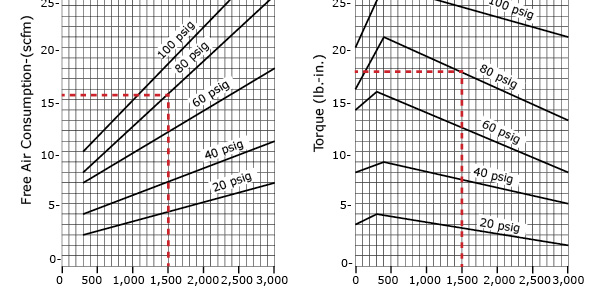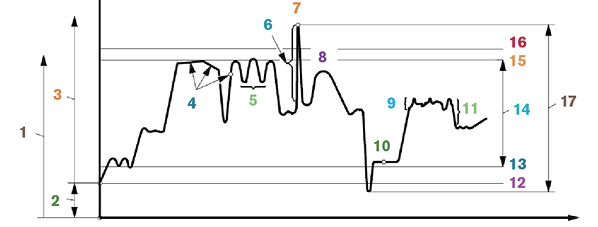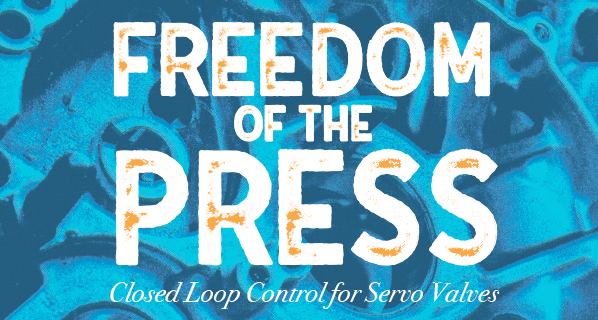CCEFP Summit Brings Fluid Power Collaboration To UW-Madison
 In October 2019, the Center for Compact and Efficient Fluid Power (CCEFP) held its biannual Summit on the University of Wisconsin-Madison campus. This network of fluid power research laboratories, academic faculty, commercial industry representatives, and graduate and undergraduate students came together for 3 days of presentations and tours spotlighting the solutions to challenges and concerns that fluid power professionals face on a regular basis, as well as the kickoff of the U.S. Department of Energy’s Technologist-in-Residence Program.
In October 2019, the Center for Compact and Efficient Fluid Power (CCEFP) held its biannual Summit on the University of Wisconsin-Madison campus. This network of fluid power research laboratories, academic faculty, commercial industry representatives, and graduate and undergraduate students came together for 3 days of presentations and tours spotlighting the solutions to challenges and concerns that fluid power professionals face on a regular basis, as well as the kickoff of the U.S. Department of Energy’s Technologist-in-Residence Program.
Among the many guests attending the Madison, Wisconsin, event were Yingdan Wu, James Szybist, Kim Stelson, Jordan Saikia, Marc Petit, Christopher Mileti, Mingda Liu, Kevin Lingenfelter, Eli Levine, Gary Kassen, David Holt, Jose Garcia, and, of course, the current CCEFP Director Zongxuan Sun. Throughout the Summit, attendees shared their presentations covering four focus areas: Pumps, Motors, and Valves Efficiency Improvements; Fluid and Electric Power Integration; Coatings and Fluids Efficiency Improvements; and Fluid Power Energy Conversion and Storage.
Kicking off the presentations for a day of shared learning and impromptu peer review was the “Efficient, Compact, and Smooth Variable Propulsion Motor” project presented by James Van de Ven of the University of Minnesota. His segment opened the Summit focus area on Pumps, Motors, and Valves Efficiency Improvements, leading into presentations from Will Durfee (“Hydraulic Ankle Foot Orthosis for Prescription of Orthoses for Children with Cerebral Palsy”), and Tom Chase (“High Efficiency Hydraulic Pump-Motors Employing Partial Stroke Piston Pressurization”). To learn more about Chase’s project from the beginning, see “Research to Watch” on page 8 of our June 2019 issue. Wrapping up the focus area topic was Nathan Hagstrom on Tom Chase’s behalf with a presentation on the “High Performance Piezoelectric Pneumatic Proportional Valve.”
After a short break, the Summit continued with its next presenters who tackled the broad topic of Fluid and Electric Power Integration. First to present was the UW-Madison/Uni of Minnesota collaboration team of Eric Severson and James Van de Ven. Together, they discussed their project on “Seamless Electric to Hydraulic Conversion.” Next, Andrea Vacca of Purdue University presented an update on his project involving “Individual Electro-Hydraulic Actuators for Off-Road Machines.” Then, Perry Li shared his presentation on “Hybrid Hydraulic-Electric Architecture for Mobile Machines” and sparked some interesting conversations during the Q&A that followed.
A pause for lunch and some brief networking left the attendees ready for deep dive into the focus area of Coatings and Fluids Efficiency Improvements. Paul Michael and Ashlie Martini kicked off the afternoon presentations with their discussion on “Polymer-Enhanced Fluid Effects on Mechanical Efficiency of Hydraulic Pumps,” a project they first presented in a CCEFP webinar in Fall 2018 examining the hydraulic efficiency, solution rheology, and molecular properties of polymers. The team was back with an update on their research and recent adaptations to their work. (See “Research to Watch” on page 38 of our March 2019 issue to see where the team’s project originally began.)
Next, the attendees heard from Georgia Institute of Technology with a presentation on “Dynamics of Rolling Friction in Soft-Rigid Interface.” Then, Osman Eryilmaz from the Argonne National Laboratory shared his presentation on “Novel Coatings for Advanced Fluid Power Systems.” Closing out the focus area was a presentation by Lelia Cosimbescu, who came to share her research on “Additives (VIIs) and Base Fluid Design for Enhanced Mechanical Efficiency of Hydraulic Fluids.”
The day ended with a tour of UW-Madison’s laboratory and campus facilities, but not before a discussion-led presentation from Sage Kokjohn on “Intelligent Integration of Motor and Engine.” After the tour of the lab in the Engineering Hall, groups were invited to also visit the electrified engine testbed and microgrid in the Wisconsin Energy Institute.
The final day of the CCEFP Summit involved more presentations followed by the IEC Meeting. Although shorter in length than the previous day’s itinerary, the focus area certainly wasn’t short on depth. Kicking off the day of knowledge sharing was Kim Stelson with a presentation on “Increasing the Efficiency of Wind Turbines through Understanding of their Transient Responses.” Next, the attendees heard from Jose Garcia and learned more about his project on “Distributed Compact Hydraulic Regenerative Braking for Heavy Duty Transport Vehicles.” Then, the team working with Zongxuan Sun on “Modeling and Optimization of Trajectory-Based HCCI Combustion” provided an update on their professor’s project. Finally, Oak Ridge National Laboratory’s Jim Szybist provided the last presentation of the event covering an “Overview of ORNL’s Combustion Portfolio Relevant to Fluid Power.”
To learn more about all the Fall 2019 CCEFP Summit presentations in-depth, visit http://www.ccefp.org/engagement/summits/ccefp-summit-fall-2019/. Each presentation is password protected and can be accessed by consortium members only.
The biannual CCEFP Summits provide an opportunity for industry professionals and academic partners to share their hard work, analyses, and conclusions with peers and colleagues in a non-competitive environment. A hallmark of the network, the idea sharing and collaboration opportunities at the Summit are another incentive for members of the fluid power industry to attend and participate. If you were unable to attend a CCEFP Summit last year, keep an eye out for news of the upcoming Summit scheduled for spring 2020. For more information, visit www.ccefp.org/engagement/summits.







